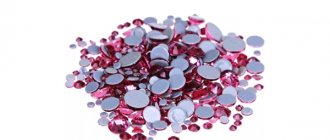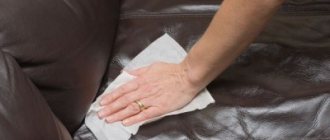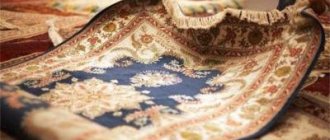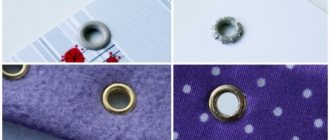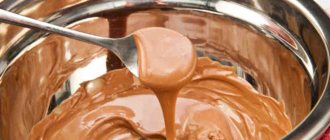You can sharpen a ceramic knife at home using diamond stones or water stones, a machine with 80 and 40 micron discs, a manual or electric sharpener, musat, or a special paste. Abrasives of 240, 600 and 1000 grit or softer abrasives of 800, 1600 and 3000 grit may be useful.
It is important to maintain the factory sharpening angle of the blade - 25-30 degrees, otherwise it may remain dull or acquire defects. Whether it is one-sided or not is no less important, because the processing technique depends on this. But in any case, you need to work on the blade without strong pressure, not like with a steel blade.
Options for sharpening a ceramic knife at home on one side
To sharpen a ceramic knife with a single-sided blade at home, you mainly need to process only the side where there is a descent:
- The instrument must be well washed. It is thoroughly wiped and any remaining moisture is allowed to evaporate.
- Initially, the lower part of the descent is processed without touching the cutting edge. The blade is placed on the device with this sharpened side, pressed from above so that the planes are pressed against each other. It should be moved in the direction from the butt to the blade and vice versa, while simultaneously moving from the tip to the handle. The blunt part of the blade should be facing the master.
- Then the cutting edge itself is sharpened. The blade is placed in the same position as in the previous stage, that is, going down, but slightly tilted forward. The lower part of the blade is pressed more tightly against the block, the cutting edge is in direct contact with it. You need to work in the same way - with small movements from the butt to the blade with a simultaneous transition along its entire length from the handle to the tip.
- The blade is turned over with its flat side facing the block. And process the cutting edge with a few light movements. The rest of this side of the blade should remain intact.
- The knife is returned to its previous position. And once again lightly process the cutting edge of the side with the descent to remove errors.
Sharpening ceramic knives on both sides
Sharpening ceramic knives, if the blade is sharpened on both sides, is performed differently:
- Using a medium abrasive block, the lower part of the blade descent is processed. The cutting edge is not affected.
- Then the blade is turned the other way. It is necessary to grind off the lower part of the descent, as in the previous step.
- A finer abrasive is used to process the cutting edge. First they sharpen it on one side, then finish it on the other.
All movements are made across the blade, processing it from the handle to the tip.
Let's decide - one-sided or two-sided sharpening
When sharpening, pay attention to how your tool was initially sharpened - on one or both sides.
Traditional ceramics require the creation of precise cuts and have a flat blade sharpened on one edge.
Today, the already familiar instruments with double-sided wedge-shaped triggers are also common.
It is worth noting that such knives are universal - they are convenient not only for right-handed people, but also for left-handed people. When purchasing, consider the blade type of your ceramic.
Attention! Under no circumstances should you sharpen items with double-sided sharpeners if only one edge was initially sharpened, as this can lead to damage.
How is one-sided sharpening done?
Initially, the edge that acts as a wedge is ground down. Grinding occurs until a uniform burr is visible on the edge.
After this, you need to turn it over and sharpen this burr.
How is double-sided sharpening done?
This type of grinding involves first applying a coarse-grained stone to one of the surfaces, and then symmetrically sharpening the other.
The ideal surface is achieved by the additional impact of fine-grained stone.
Also read:
How to descale a kettle using Coca-Cola
How to clean silver from blackness
Is it always possible to sharpen how to understand what is already needed?
It is possible to sharpen ceramic knives, since the material of the blades contains metal and they can be processed. But this should be done more carefully than with steel tools. The material from which ceramic blades are made is still fragile, so it’s not for nothing that the knife is not recommended for cutting meat with bones and poultry.
They need to be sharpened on average 2 times a year, but here it is important to take into account the following factors:
- Terms of Use. If the tool is used infrequently, once a year is enough.
- Quality of the weapon. Knives with dark blades have better sharpness and strength compared to white ones. Accordingly, they become dull more slowly.
- Requirements for blade sharpness. It is considered dull if it has difficulty cutting or creasing a piece of paper. But even in this state, you can use a knife, for example, to peel vegetables or cut hard foods into thick bars. And if the owner of the tool is satisfied with the sharpness of the blade, you can wait to sharpen it.
Advantages and disadvantages of ceramic products
Advantages of ceramic knives:
- blade sharpness;
- neutrality;
- environmental cleanliness;
- light weight;
- chemical resistance.
The sharpness of the blade, which contains zirconium dioxide, is accompanied by the fragility of the material. Zirconium dioxide ranks third in hardness after diamond and corundum, which are in first and second place.
For a long service life, you need to ensure proper operation of the ceramic product. Ceramic knives differ from their steel counterparts in that they do not oxidize and do not affect the taste and color of the processed products.
Environmental friendliness allows us to recommend this tool for preparing baby food. The tool is lightweight, with its help you can cut food quickly and beautifully without feeling tired. A metal blade becomes covered with rust and stains over the years. This does not happen with ceramic products.
They are not afraid of hot water, detergents, household chemicals, and are scratch-resistant.
Flaws:
- great fragility;
- high price;
- lack of versatility;
- difficulty of sharpening.
It is not recommended to use sharp ceramic products to cut hard foods. The fragility of the material does not allow cutting bones and cartilage or opening cans. The blade breaks even when you try to bend it with your hands.
Ceramics are more expensive than metal, so knives are not cheap, nor are they versatile. The tool is used in the kitchen, but is not suitable for camping. It is suitable for cutting soft meat, vegetables and fruits.
How to sharpen ceramic knives at home
You can sharpen ceramic knives at home using one of the following devices:
- musat,
- bars or stones of different abrasiveness, not forgetting to moisten them with water;
- machine with diamond discs (harder and finer-grained grinding);
- hand knife;
- electric sharpener;
- diamond paste if the blade is slightly dull.
But ceramic sharpening is not very suitable for such knives. These are materials of the same hardness. Therefore, the blade is more likely to crumble than become sharper. A zirconium dioxide blade should be treated with an abrasive with a higher hardness.
Musat sharpener
Diamond musat
The musat sharpener is a metal rod with a handle. Externally, the tool resembles an enlarged screwdriver with a thick and longer shaft, of the same diameter along its entire length.
The working part can be made of metal or ceramics. There are always notches on it. On ceramic musat they are both large and small, that is, the tool is suitable for rougher work and surface grinding at the same time. But for the type of blades under consideration, metal is more suitable. They should be careful not to damage the edge.
To process a dull blade, the knife is held in the right hand, and the musat is fixed with the left. The latter remains motionless; you can, for example, install it at one end on a wooden block. The blade of a knife is moved along the shaft with light pressure to make the edge sharper. Usually a few strokes up and down along the working part of the musat are needed.
With this device it is more difficult to maintain the correct angle of sharpening the knife. But when using it, it is easy to control the pressure on the blade, that is, there is less chance of damaging it.
Knife stone and block
As a knife, you can use bars of different abrasiveness and sharpening stones:
- The first ones are small in size and light. Therefore, when working with them, the blade is fixed motionless, and the block must be moved along the blade with slight pressure. It is more convenient to do this if you have a sharpening system such as Lansky, Efim or Skladishok.
Diamond bars with abrasiveness of 240, 600 and 1000 grit are suitable for ceramics; they are used in the same sequence. Be sure to wet the surface of each of them with water several times during the process, otherwise there is a risk of breaking the blade. To reduce the likelihood of the material splitting, you can use 800, 1600 and 3000 grit abrasives. But they will have to work longer.
- The stones are large and heavy. Therefore, they must remain motionless during the sharpening process. And the blade is placed on top, observing the angle, and the blade is processed with movements from the handle to the tip. Before starting the process, the stone should be soaked in water for half an hour or a little longer. And while sharpening, you should pour liquid over it from time to time.
It will take quite a long time to process the knife with bars and stones. Without using a set with guide rods and a vice that allows you to fix the blade and accurately set the abrasive, there is a risk of deviating from the factory sharpening angle. But if you work carefully and take your time, you can bring the blade to perfection. And there is less chance of breaking the blade.
Special machine
Sharpening machine Tormek T4
The machine for knives with ceramic blades is a disk device. It runs on electricity. When turned on, the disk begins to rotate, and the blade should touch its surface. This allows you to sharpen the knife faster, but requires great care. To avoid accidentally damaging the blade, it is important:
- set the average rotation speed (no more than 200-300 rpm);
- lean the blade against the surface of the disc evenly along the entire length, but do not press too hard;
- For initial processing, use 80 micron diamond abrasive, for finishing - 40 microns.
If the blade has a double-sided sharpening of the blade, first treat one side with the first disk, then the second. Then install another abrasive and repeat the process.
This method of sharpening kitchen tools is one of the fastest. But due to inexperience, the knife can easily be damaged.
Hand sharpener
A manual sharpener for ceramic blades is a stable plastic base with grooves that have an abrasive surface on the inside. Usually there are 2 or 3 of them - the main ones and for finishing the blade. The blade must be inserted into the groove and the knife must be moved back and forth.
This device is safe and allows you to more accurately maintain the sharpening angle. Problems may arise if the thickness of the blade is less than or greater than the clearance of the groove.
Electric sharpener
Electric sharpener for ceramic and steel knives Chef'sChoice 700 CH/700
Electric sharpeners are similar in appearance to manual ones, that is, they also represent a main block with grooves for blades. But there are significant differences:
- they operate on batteries, accumulator or mains;
- abrasive discs located in the grooves move when the device is turned on;
- You can change the sharpening angle, adjusting it to the initial indicator of the knife.
The device is activated by pressing a button. The blade must be inserted into the groove with the blade down and pulled between the moving disks so that they pass along it from the base to the tip.
This method will achieve results much faster than using a manual sharpener. And it is difficult to damage a knife with an electric device by making the blade wavy. But the cost of a good unit is 3-10 thousand rubles. And the cheap ones have too little power; sharpening the knife will be problematic.
Diamond paste
Diamond paste is used for final sharpening of a knife, or more precisely, for straightening after treating the blade with harder materials (must, whetstone, stone). The product gives the edge not only sharpness, but also smoothness. This also improves cutting properties.
The paste has a soft consistency, although it contains abrasive particles measuring 5 or 7 microns. The smaller the diamond dust particles, the more gentle the effect on the instrument. The product is applied in a thin layer onto a board with a flat surface. The blade of the knife is passed along the device with pressure so that all its areas are processed.
The procedure is quite long and painstaking, but the result is worth the time spent.
In what cases is it better to send the product to a workshop?
If you do not have a special sharpener or a diamond wheel at hand, or you have never worked with such products before, you can take the knife to a workshop for sharpening. This solution has many advantages:
- You will be provided with a warranty for the knife. Even if the master damages it during the sharpening process, he will certainly compensate you for the damage caused.
- The sharpening procedure itself will take very little time - only half an hour.
- You can choose any type of sharpening, turning to professionals for help.
It should also be noted that it is the sharpening carried out in the workshop that lasts much longer than at home. It is for this reason that this service is often recommended even to those owners who know how to properly sharpen ceramic knives, but do not want to spend either time or effort on it.
Video: how does ceramics differ from steel?
How to correctly calculate the sharpening angle
You can correctly determine the sharpening angle of a ceramic knife using an electronic goniometer.
Protractor electronic inclinometer 5415-180 (2×180°; ±0.2°) on a magnetic base Shahe (mdr_1092)
But you can return the blade to its former sharpness without this. After all, the standard sharpening angle for ceramic knives is 25-30 degrees. These numbers are what you should focus on.
If you try to reduce the angle, it is easy to damage the gun. Brittle ceramics can begin to crumble, especially when trying to straighten them with diamond abrasives.
Diamond sharpeners
A sharpener is the most convenient tool for maintaining ceramic knives at home. It comes in two types:
- Electric. The device is a compact design of two diamond-coated disks, which operates using batteries or a special accumulator. The sharpener automatically adjusts to a specific blade and automatically sets the sharpening angle. All that is required is to insert the knife into the opening intended for it and turn on the device.
- Manual. A cheaper option for a sharpener: the device also consists of two diamond discs, but is operated manually - you need to independently move the blade along the working surfaces. In most cases, the sharpening angle is adjusted, so there is no need to adjust the device.
Important. When buying a manual or electric sharpener, pay attention to which knives it is intended for: single-sided or double-sided.
How to repair a ceramic knife
The need to repair a ceramic knife arises if unevenness or chips have formed on the blade due to careless or prolonged use. For shallow defects, you can try to resharpen the tool:
- First, mark with a marker the area of the blade that needs to be removed along the entire length of the blade part.
- It is then ground down on a machine with a diamond blade.
- The edge is sharpened on both sides using a softer abrasive.
After this, the width of the blade will, of course, decrease slightly, but the knife will be usable. Instead of a machine, other sharpening devices are also used, but with them the work will last longer.
Watch the video on how to sharpen a ceramic knife:
Sharpening by blade type
Blades differ in the angle and side of sharpening. European knives are sharpened at an angle of 20° on both sides, while Asian knives are sharpened at an angle of 15° or less on one side. Double-sided instruments are considered universal, as they can be used by both right- and left-handed people.
Single-sided sharpening
If the knife can only be sharpened on one side, stick to this rule.
Trying to sharpen the other side as well may damage the blade.
When sharpening a single-edge tool, sharpen the wedge side first. The opposite side will be leveled. Turn the product over and bring to a boil without creating a corner.
To fix this, you need to purchase a device with a unidirectional sharpening function.
Sharpening on both sides
In double-sided threading, first one side is covered with burrs, and then the other side at the same angle. Sharpening in a double-sided sharpener is most convenient: the operating time is significantly reduced.
Attention please. A ceramic knife cannot be sharpened for preventive purposes. Only if absolutely necessary.
Basic rules for caring for the product
In order for a ceramic kitchen aid to last longer, remaining sharp and without damage, it is important to use it correctly and care for it after use:
- do not cut frozen foods, meat, fish with bones;
- use it on a wooden cutting board, not glass, metal or artificial stone;
- immediately after use, wash by hand with a mild detergent without abrasive particles, rinse, wipe dry, and only then put in a closet;
- use warm water; hot or cold water may cause cracks to appear on the blade;
- store separately from metal cutlery and kitchen utensils to avoid damage by them;
- do not drop it on the floor or table, the fall will cause chips on the blade;
- Do not use for other purposes, that is, for opening cans, scraping hard surfaces, etc.
Sharpening a ceramic blade is more difficult than sharpening a steel blade. And if you are not sure what will work, and the knife is expensive, it is better to take it to a workshop. If you want to try to sharpen the blade yourself, it is better to work with a cheap product first.

